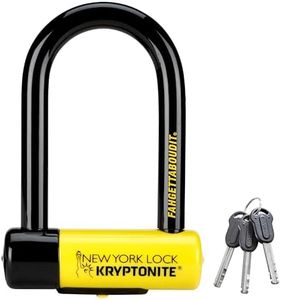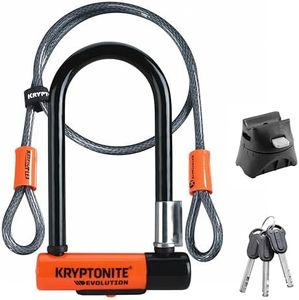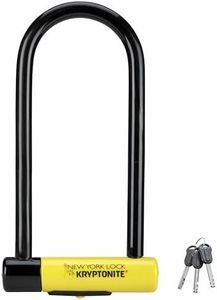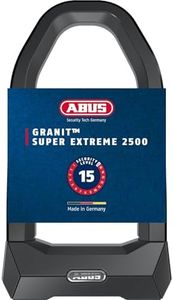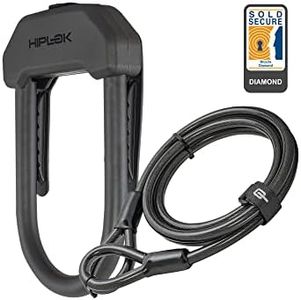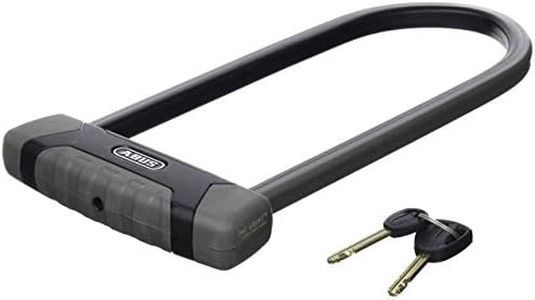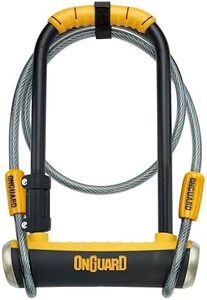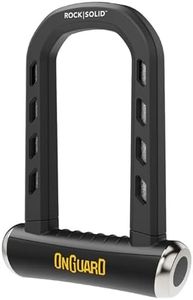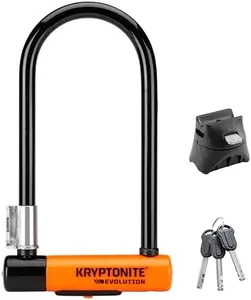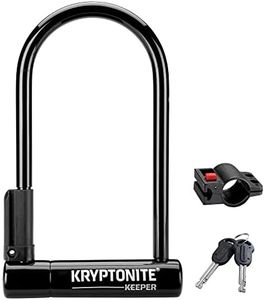We Use CookiesWe use cookies to enhance the security, performance,
functionality and for analytical and promotional activities. By continuing to browse this site you
are agreeing to our privacy policy
10 Best U Locks
From leading brands and best sellers available on the web.Buying Guide for the Best U Locks
Choosing the right U-lock is important for keeping your bike or scooter secure. U-locks are popular because they are strong and typically harder to break than cable locks. To find a lock that matches your needs, think about how and where you'll use it, and what level of security you need. Understanding the main features of U-locks will help you decide which one is best for your daily use and peace of mind.SizeThe size of a U-lock refers to both its length and width, which affects what you can lock your bike to, and how easily you can carry the lock with you. Small U-locks are lighter and easier to handle, but may limit what objects you can secure your bike to, such as thicker poles. Medium-sized locks offer a good balance between portability and versatility. Large U-locks can secure more of your bike (like both frame and wheel), or be used on bulky bike racks, but are bulkier to transport. If you normally lock your bike in the same place, you may only need a small or medium lock. If you want more flexibility, consider a larger size.
Shackle ThicknessShackle thickness is the diameter of the solid metal part of the lock and is directly related to how difficult it is to cut through. Thin shackles (around 11-13mm) are lighter but can be cut more easily, while medium thickness (around 14-15mm) adds more security. Thick shackles (16mm or more) are much harder to defeat with basic tools, but are heavier to carry. Think about how much risk you face: for high-theft areas, a thicker shackle is better, whereas for occasional use in safer places, thinner may be enough.
Locking MechanismThe locking mechanism determines how secure and easy to use the lock is. The most common types are key locks and combination locks. Key locks are usually harder to pick and provide better security, but losing the key could be a problem. Combination locks are convenient since you don’t need a key, but tend to be less secure. Consider which you'll find more convenient and how worried you are about losing keys. For the highest peace of mind, key mechanisms are usually preferred.
Security RatingSecurity ratings are often provided by independent testing groups and indicate how well the lock can resist different theft techniques. Ratings can go from basic to high security. High-rated locks withstand cutting, picking, and leverage attacks longer, but may be bulkier or more expensive. If you're in a high-risk area or leave your bike for long periods, look for higher security ratings. For quick stops in lower-risk areas, a basic rating can sometimes be enough.
WeightWeight influences both how easy it is to carry your lock and how secure it can be, since heavier locks generally use more metal and are harder to break. Lightweight locks are easier to carry on your bike or in a bag, but may offer less protection, while heavyweight locks provide better security yet can be inconvenient to transport daily. Think about how much you’ll carry the lock and balance portability with how secure you want your bike to be.
Mounting OptionsMany U-locks come with brackets or systems so you can attach the lock to your bike frame while riding. This makes it easier and more comfortable to transport the lock daily. Some have better mounting solutions than others, depending on their shape and size. If you plan to use your lock often, look for one with a reliable, rattling-free mount that easily fits your bike frame.
